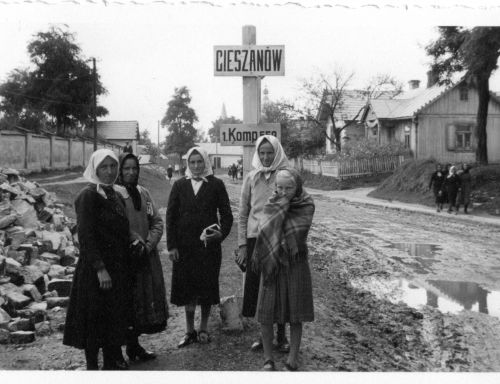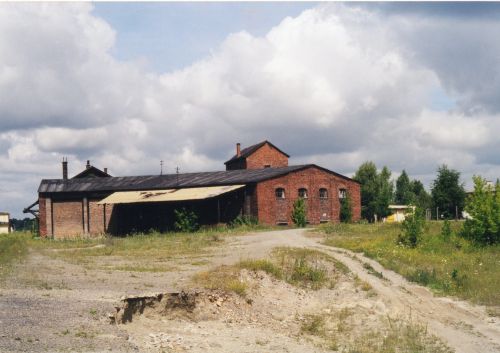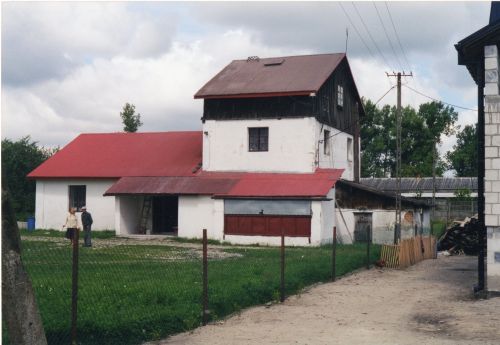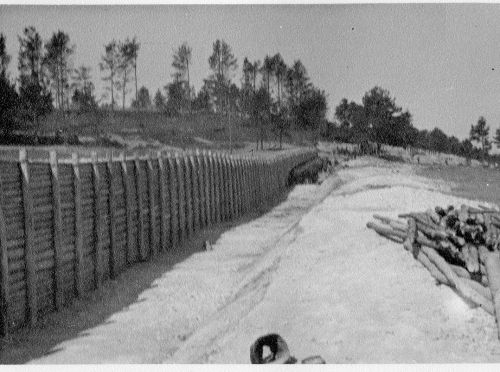The Belzec Area Labour Camps

Cieszanow Village - (Chris Webb Private Archive)
From the end of May 1940, until August 1940, the Germans established a number of Labour Camps in and around the village of Belzec. These housed workers building the so-called 'Otto Line,' a series of fortifications along the border with the Soviet Union. The Germans forced Jews from Lublin, Radom and Warsaw districts to slave on this project, as well as Gypsies from the Reich and other parts of Poland were also used. The Jews were housed in three sites in Belzec; The Manor, which housed 1,000 people, Kessler's Mill which housed 500 people and the Locomotive Sheds, which housed 1,500 people. according to a 1940, German report.

Belzec - Locomotive Sheds -July 2000 (Chris Webb Private Archive)

Belzec - Kessler's Mill - July 2000 (Chris Webb Private Archive)
Outside Belzec village other workers were housed in Cieszanow in two barracks and Plaszow- not to be confused with the notorious Plaszow Arbeitslager in Krakow - in two houses and in Lipsko near Narol. This information was contained in a September 1940, German report, about the camps on the border
The Labour Camps were established in abandoned synagogues, warehouses or barns, a total of some 35 camps were created with over 10,000 workers employed on building fortifications, roads and regulating rivers.

The Otto Line fortifications (Chris Webb Private Archive)
The Commandant of the Labour Camp complex was SS-Sturmbannfuhrer Hermann Dolp, who had also been the commandant of the Lipowa Street Camp in Lublin and during 1941, after the Nazi invasion of the Soviet Union - had served in the 'SS Strongpoints in the East' construction programme based in Minsk. His deputy was SS-Hauptscharfuhrer Franz Bartetzko, who later went on to manage the Jewish forced labour camp at Trawniki from the spring of 1942, and later on he was a member of the SS administration at the Jewish forced labour camp at Budzyn.
Another more famous SS Officer Oskar Dirlewanger, who was the commander of the notorious SS-Sonderkommando Dirlewanger, which was made up of petty criminals and cut throats. They were responsible for the orgy of killing of the Polish population during the Warsaw Home Army uprising during 1944. Prior to this, Dirlewanger was the commandant of a Jewish Labour Camp at Dzikow, one of the labour camps that was in the Belzec area.
The working conditions in the labour camps were truly awful, with workers beaten, tortured, and forced to perform heavy labour on starvation rations. Adam Czerniakow, the chairman of the Judenrat (Jewish Council) in the Warsaw Ghetto, wrote about the conditions in the Belzec Labour Camps several times in his diary. His entry on August 29, 1940, records the following:
Word from the Belzec camp, poor food etc. I arranged for two conferences, one with participation of Neustadt. I authorised the Obmann (Chairman) from Zamosc to engage doctors at our expense for Belzec. Tomorrow I will try to obtain a loan for the camp.
Another entry on September 2, 1940:
I received a pass for Furstenburg and Faust who are going to Tomaszow and perhaps to Belzec with Zabludowski. I am sending some blankets, shirts, bowls, cups, and spoons etc. The news from the camps is dismal.
Another entry in his diary on September 3, 1940 stated that:
Zabuludowski, Faust and Furstenburg left for Lublin with the gifts for the workers, including 10,000 zlotys for the camp. Lambrecht made a demand for 20 doctors for the camp.
Though the labour camps were controlled by the SS, the supply of food, clothes, and the administration was managed by the Lublin Judenrat. In Belzec, the Germans established a so-called Jewish Gremium, which was responsible for the camps organisation. All costs connected with the existence of the prisoners were paid by the Judenrat of the towns and cities from where the prisoners came. It was the Gremium who decided the allocation of food to the workers. After August 1940, the Gremium was re-named the Central Camps Council and was led by Leon Zylberajch from Lublin.
The labour camps in Belzec and those located in the area were closed down in October 1940, and the 'Eastern Rampart' was only some 40 kilometers in length, 2.5 meters deep and 7.5 meters wide, between Belzec and Dzikow Stary village. Some of the Jewish workers were released prior to the final liquidation of the labour camps, because they were unfit for work: the last transport of workers released went to Hrubieszow in late October 1940.
Source
Chris Webb, The Belzec Death Camp, Ibidem-verlag, Stuttgart 2016
Photographs: Chris Webb Private Archive
Thanks to Robert Kuwalek
© Holocaust Historical Society November 27, 2021

